Stunning photos of the UK's most historic places
Windows into the past
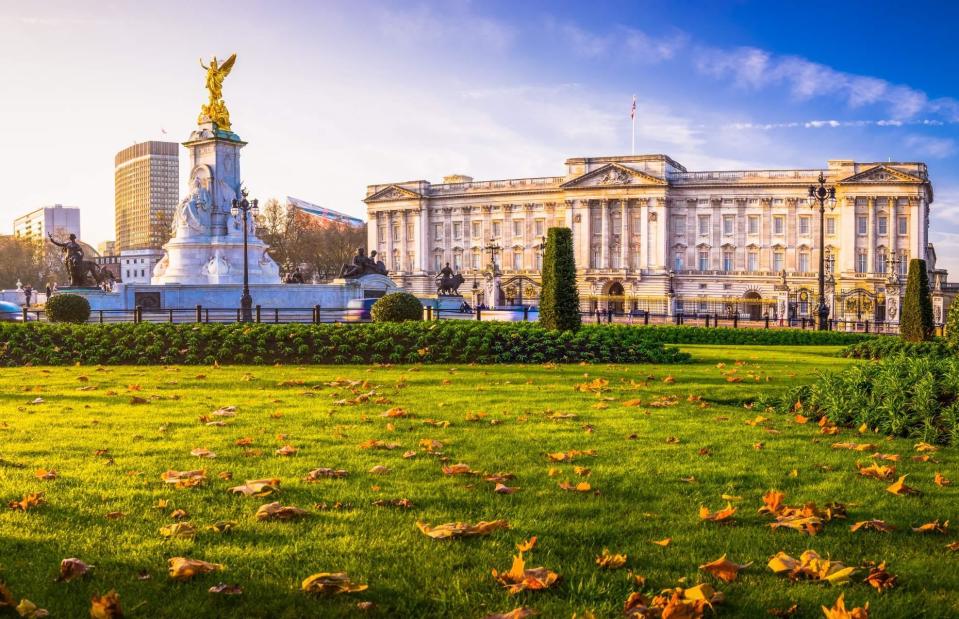
Pajor Pawel/Shutterstock
The UK is rich in beautiful places with fascinating stories to tell. Whether it’s ancient stone circles, world-class museums or mighty castles, there's history almost everywhere. Here we take a look at some breathtaking images that capture the beauty of some of Britain and Northern Ireland’s most incredible historic sites.
Hadrian’s Wall, Cumbria, Northumberland and Tyne and Wear, England
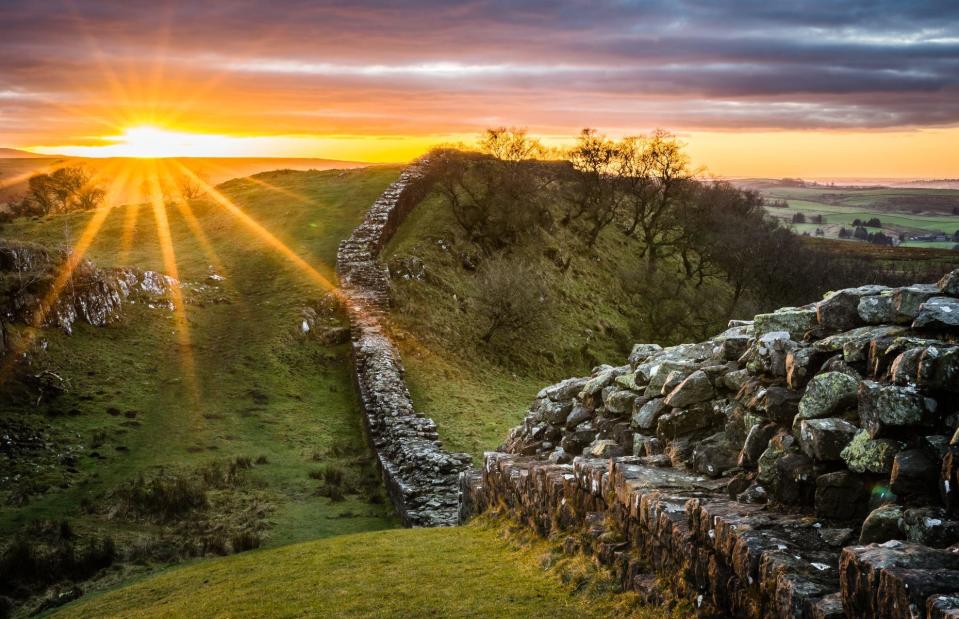
PJ_Photography/Shutterstock
One of the most famous Roman landmarks in the world, Hadrian’s Wall stretched for 73 miles (117km) across northern England from Newcastle upon Tyne in the east to Bowness-on-Solway in the west. The incredible structure was built in AD 122 to guard the northern frontier of the Roman Empire, under the orders of emperor Hadrian. The surviving portions of Hadrian’s Wall are now on the UNESCO World Heritage List and considered among the most impressive ancient Roman monuments in the country.
Stirling Castle, Stirling, Stirlingshire, Scotland
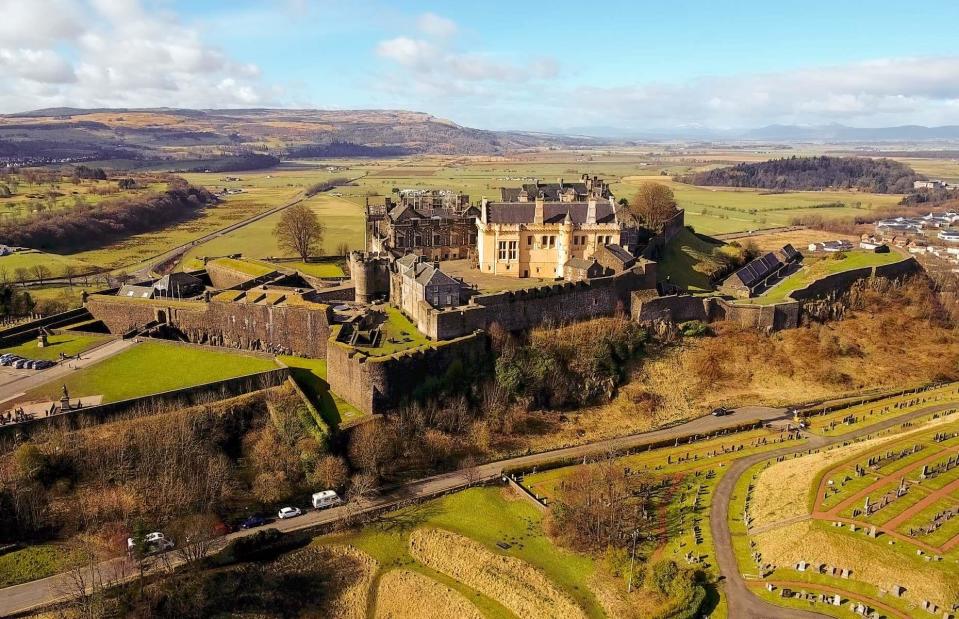
TreasureGalore/Shutterstock
Dominating a vast volcanic outcrop above the River Forth, this foreboding fortress was a key component of the Kingdom of Scotland. First mentioned in records in the early 12th century, Stirling Castle became a powerful stronghold. It changed hands eight times in 50 years during the Wars of Scottish Independence and was the childhood home of Mary Queen of Scots and then her son James VI. Today, the magnificent structure is one of Scotland’s most popular attractions.
Avebury, Wiltshire, England
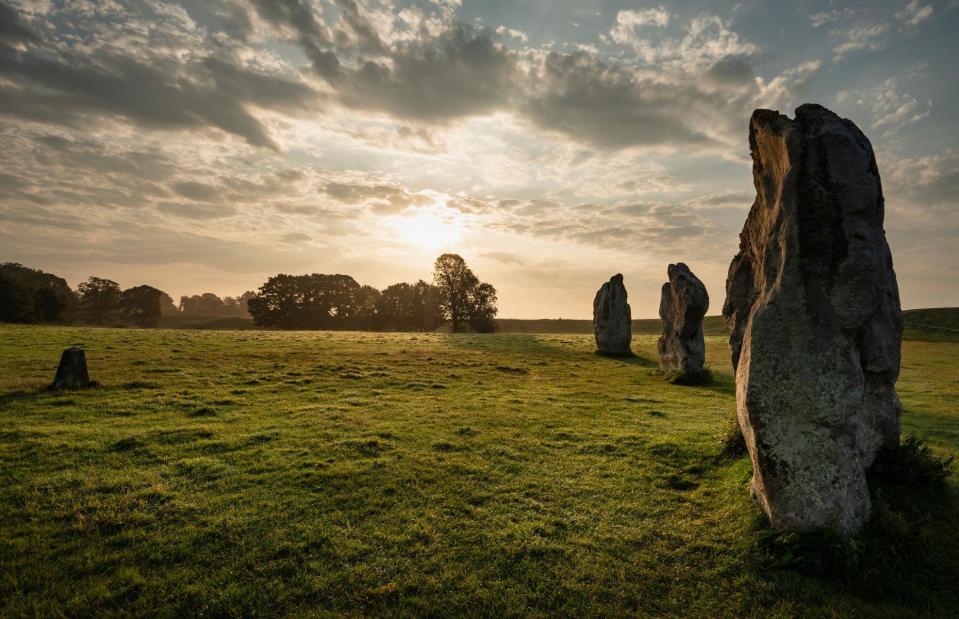
Matt Gibson/Shutterstock
Close to the more famous Stonehenge but equally fascinating, Avebury is a sprawling Neolithic complex that includes the largest stone circle in Britain. Originally made from around 100 stones, the site was erected and often altered over six centuries from 2850 BC. Avebury’s spectacular remains include banks, ditches and three stone circles.
Dunluce Castle, Bushmills, County Antrim, Northern Ireland
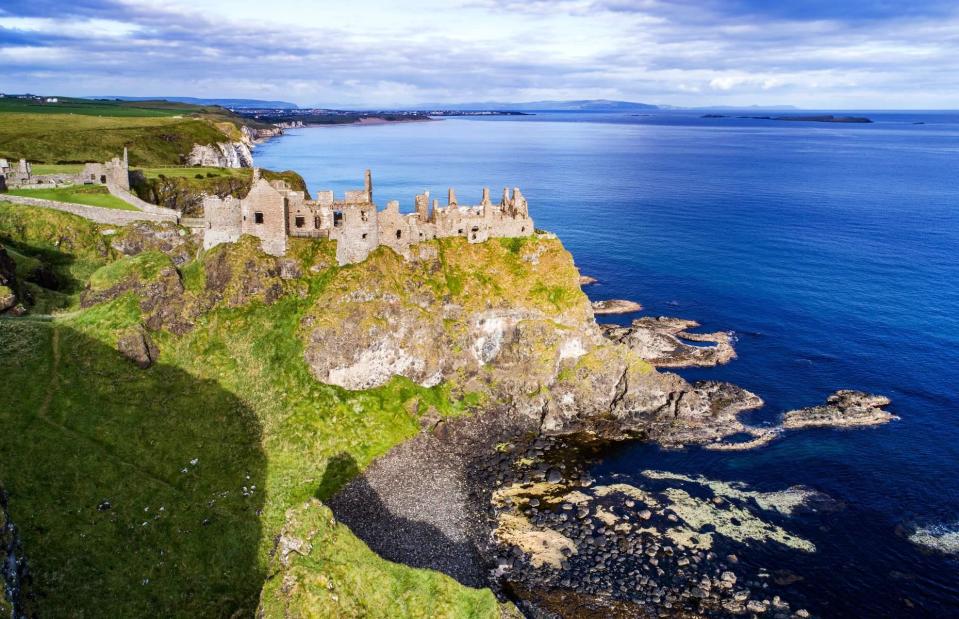
Nahlik/Shutterstock
Nestled on a cliff overlooking the Atlantic Ocean, Dunluce Castle is one of Northern Ireland’s most breathtaking sights. Originally built around the 13th century by Richard de Burgh, the 2nd Earl of Ulster, the castle was owned by the feuding McQuillan and McDonell clans during the 16th century. By the late 1700s, the castle had been abandoned and left to decay. Set against the stunning backdrop of the County Antrim coast, its picturesque ruins now house historical and archaeological exhibits.
Oxford, Oxfordshire, England
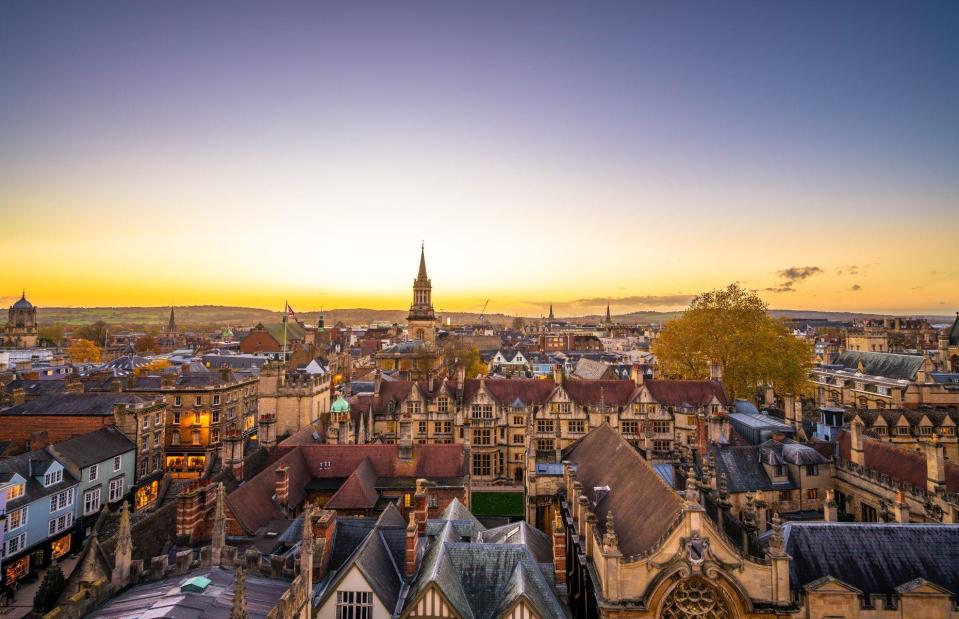
Pajor Pawel/Shutterstock
History is infused into every cobble and limestone building in this beautiful university town, described by 18th-century poet Matthew Arnold as “the city of dreaming spires”. From Oscar Wilde to Hugh Grant, plenty of famous figures have studied at Oxford’s prestigious university. Notable city landmarks include the university’s Bodleian Library, one of the biggest and oldest libraries in Britain, and the picturesque Hertford Bridge, known as the Bridge of Sighs.
St Davids, Pembrokeshire, Wales
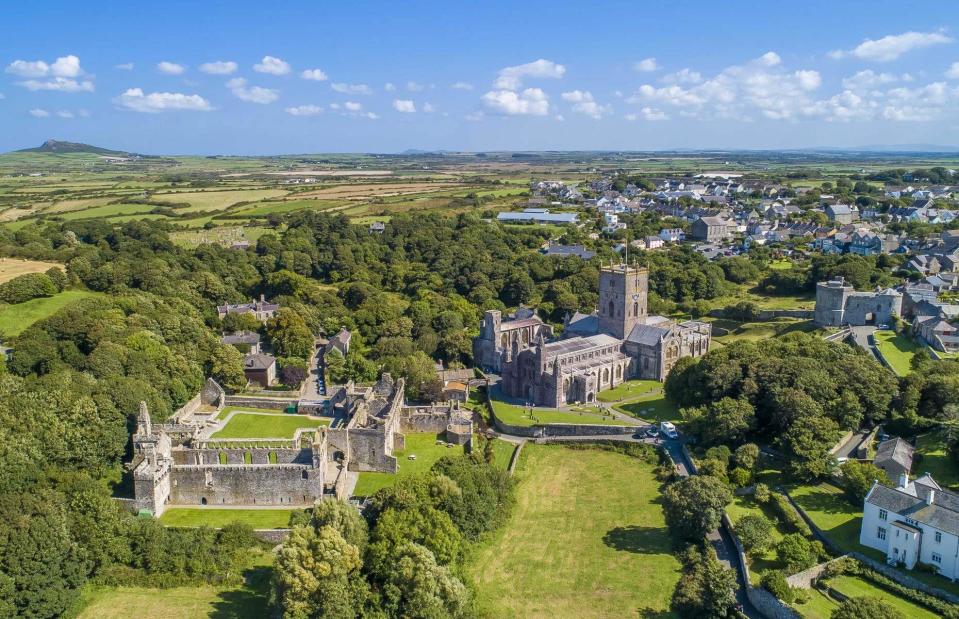
Huw Penson/Shutterstock
Known as Britain’s smallest city, St Davids also happens to be home to one of the most beautiful religious sites in Wales. In the heart of Pembrokeshire, the city’s cathedral was built where St David founded a monastery around AD 600. The present-day building dates back to the 12th century and with its incredible purple stone façade, charming chapels and stained-glass windows, it’s St Davids' most striking sight.
Natural History Museum, London, England
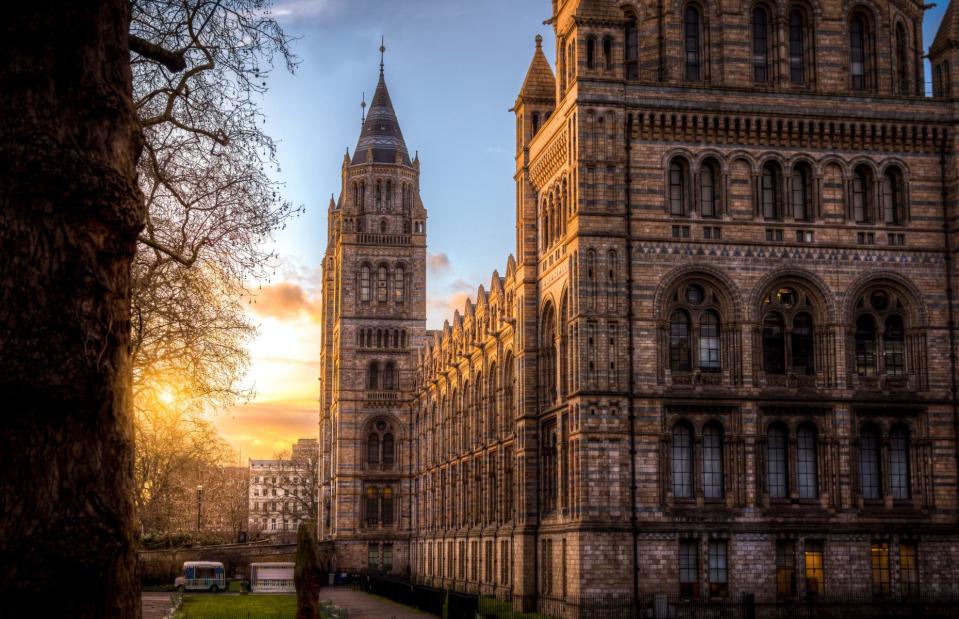
ExFlow/Shutterstock
The natural history collection was originally part of the British Museum’s collection in west London and it wasn’t until the 1850s that scientist Richard Owen suggested it should have its own building. As a result, the Natural History Museum was created and took nearly eight years to complete, opening its doors in 1881. Today, the incredible Romanesque structure is considered a work of art and is one of London’s most recognisable landmarks.
Glastonbury Tor, Glastonbury, Somerset, England
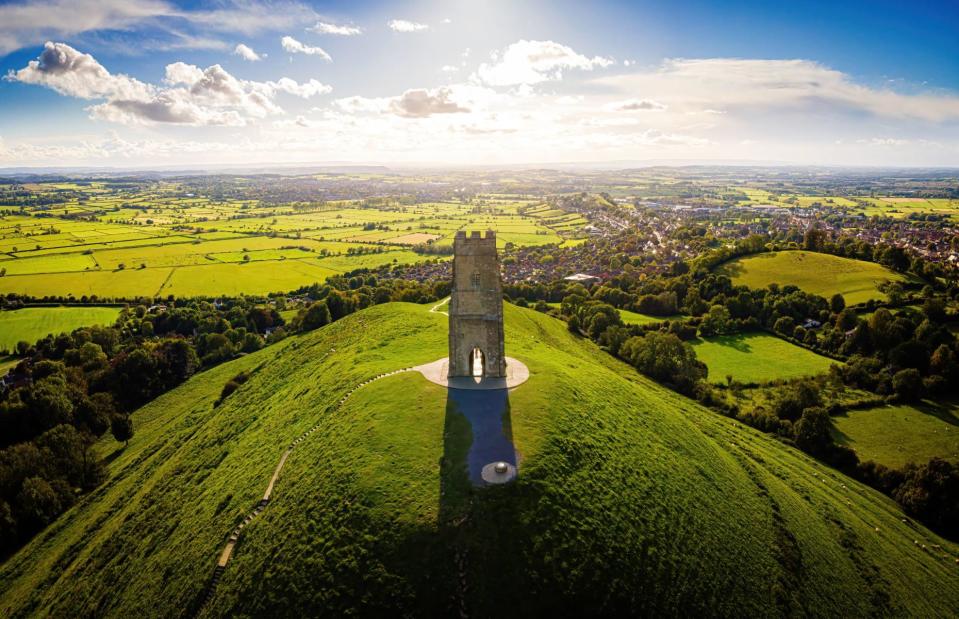
Alexey Fedorenko/Shutterstock
Tangled in pagan history and myth, beautiful Glastonbury Tor has been one of England’s most important spiritual sites for more than 1,000 years. There are many myths and legends associated with the hill, including that the Holy Grail – brought here by Jesus’ uncle Joseph Arimathea – is buried in a cave below. Perched at the top are the ruins of the 14th-century St Michael’s Tower, which offers incredible views across the Somerset countryside.
St Kilda, Outer Hebrides, Scotland
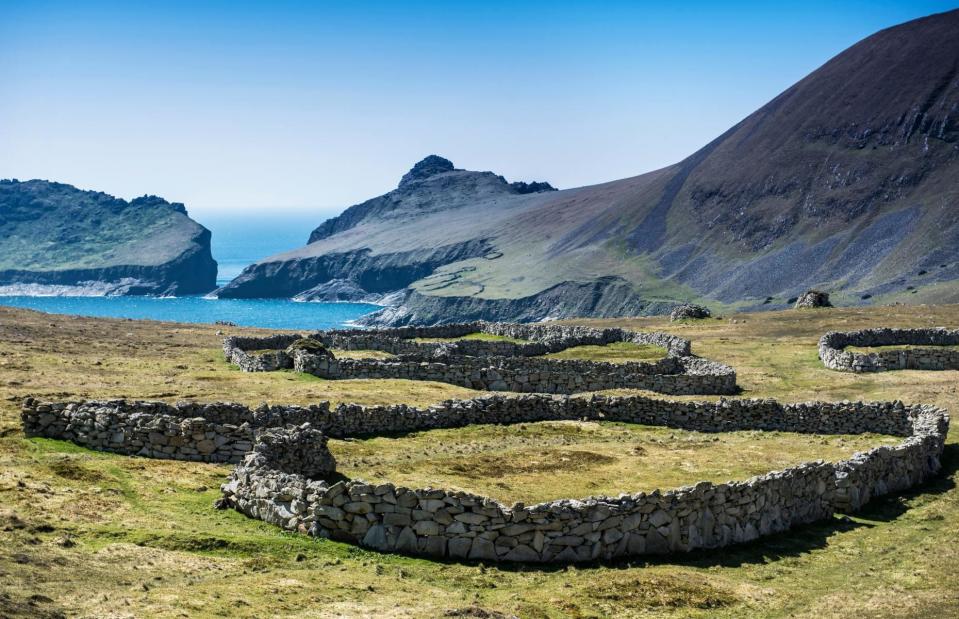
Martin Payne/Shutterstock
Just off the western coast of Scotland, St Kilda is the most remote part of the British Isles. Hirta is the largest island of the rugged archipelago and was the first to be settled by humans around 4,000-5,000 years ago. By the 1930s Hirta’s last few residents had departed the inhospitable environment for mainland Scotland. Today it’s better known for its birdlife, although stone settlements remain dotted across the island, serving as an eerie reminder of the past.
Stonehenge, Salisbury, Wiltshire, England
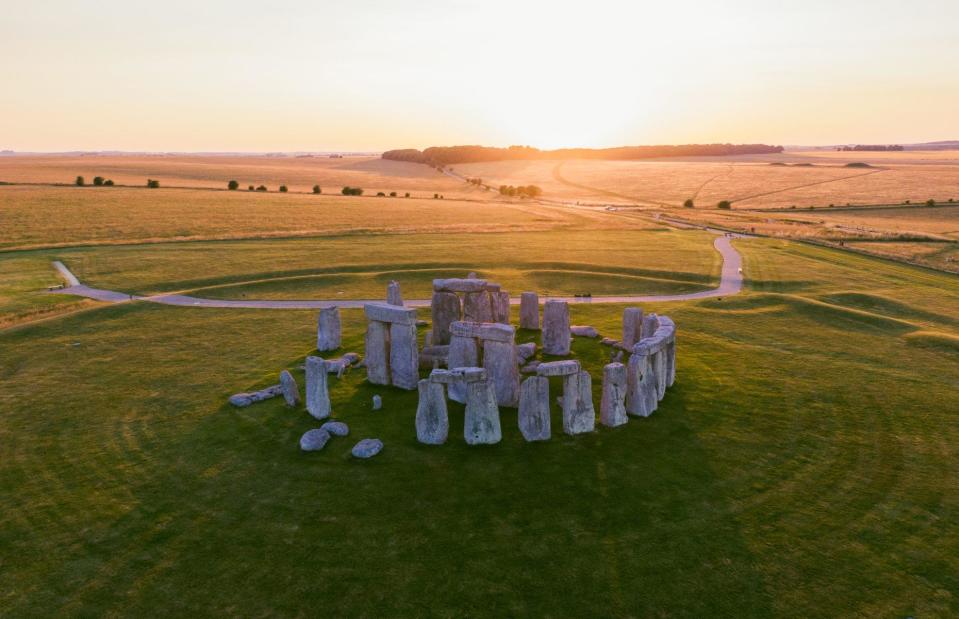
joaoccdj/Shutterstock
Soaring over Wiltshire's Salisbury Plain, this ancient stone circle is one of England’s most famous landmarks and among the best-known prehistoric monuments in Europe. The circle was erected around 2500 BC during the Neolithic period, and the mystery of how or why the stone circle came to be has baffled people for years. Today, Stonehenge forms part of a UNESCO World Heritage Site alongside the stone circle of Avebury.
Buckingham Palace, London, England
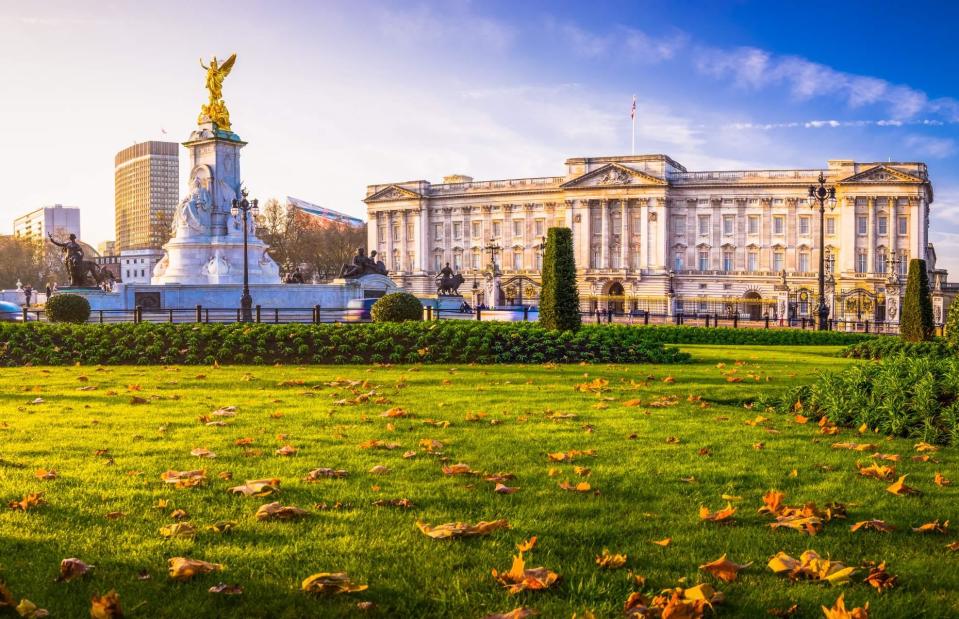
Pajor Pawel/Shutterstock
Possibly the most famous palace in the world, the Queen’s home was not always a lavish royal residence. Originally built in the 18th century as a townhouse for the Duke of Buckingham, the house was bought by George III in 1761 for his wife, Queen Charlotte. Architect John Nash then transformed it into an impressive palace fit for royalty. Sadly the king died before he could move in so Queen Victoria became the first monarch to live there. Since then, Buckingham Palace has become one of England’s most-visited attractions.
Whitby Abbey, Whitby, North Yorkshire, England
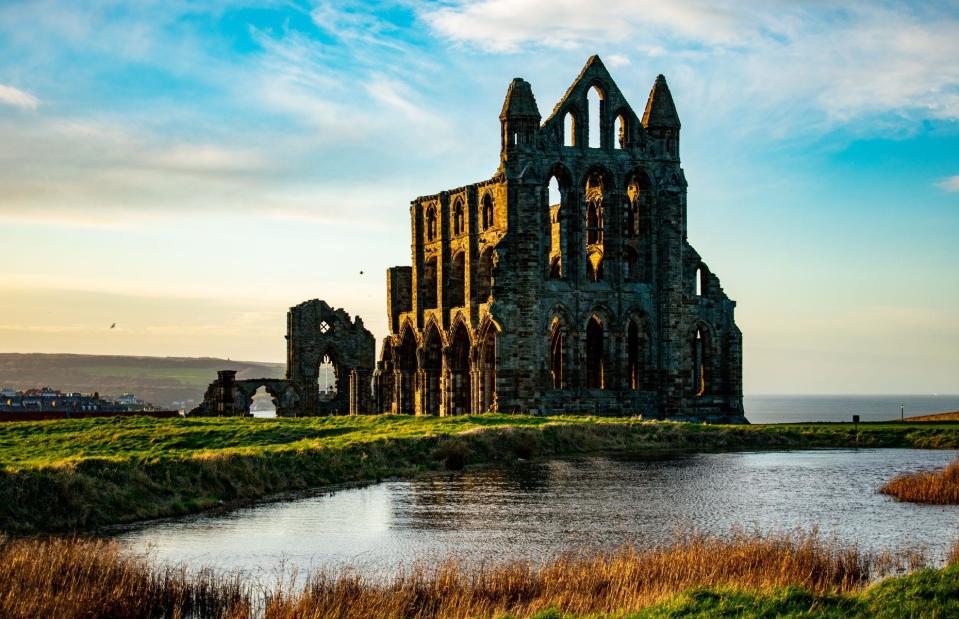
hardeyphotography/Shutterstock
Perched on a cliff overlooking the North Sea, the imposing façade of Whitby Abbey is one of the most celebrated sights in North Yorkshire. The construction of the first Gothic church began around 1225 but, due to lack of funds, it was only finished a few centuries later. The abbey was forced to close in the mid-16th century following the dissolution of monasteries and was stripped away. Bad weather, along with bombardment during the Second World War, has eroded much of the abbey’s remains, giving it a hauntingly beautiful and suitably Gothic appearance.
Carrick-a-Rede Rope Bridge, near Ballintoy, County Antrim, Northern Ireland

Lautz/Shutterstock
Erected by salmon fishermen more than 250 years ago, the Carrick-a-Rede Rope Bridge is one of Northern Ireland’s most incredible landmarks. Built to link the County Antrim mainland to Carrick-a-Rede island, the wooden bridge is suspended 98 feet (30m) above the sea and measures roughly 66 feet (20m) long. High above the crashing waves of the Atlantic Ocean and surrounded by beautiful coastline, the rope bridge has become a popular tourist attraction for thrill-seekers.
Kelvingrove Art Gallery and Museum, Glasgow, Lanarkshire, Scotland
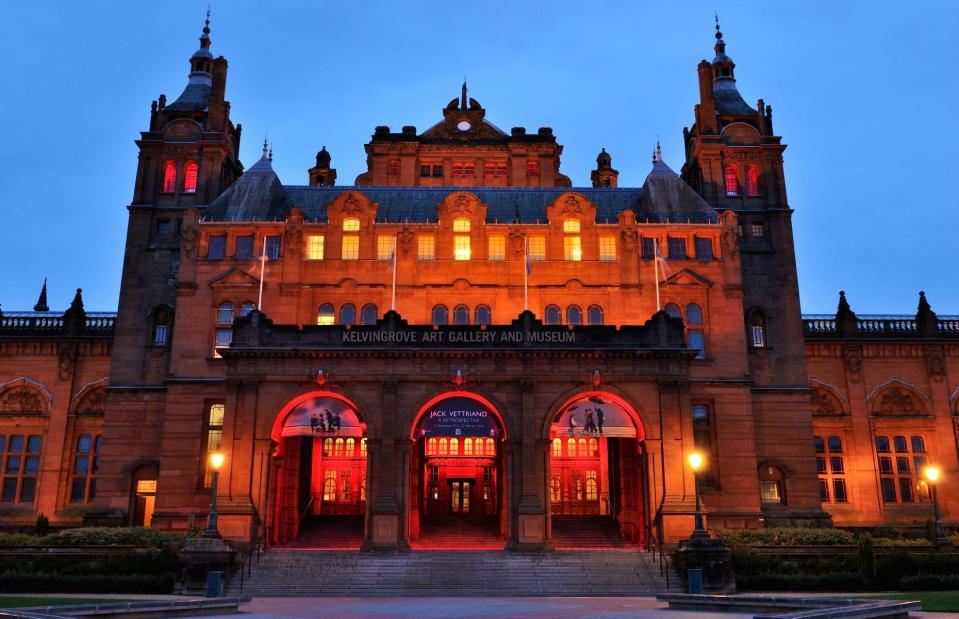
Angus McComiskey/Alamy Stock Photo
First opened in 1901, Glasgow’s Kelvingrove Museum is one of the most-visited free attractions in Scotland. Inside its beautiful Baroque building, the museum is home to one of Europe’s finest art collections. With 22 state-of-the-art galleries and around 8,000 objects, the museum’s highlights include Rembrandt’s Man in Armour alongside works by J. M. W. Turner and Monet.
Caernarfon Castle, Caernarfon, Gwynedd, Wales
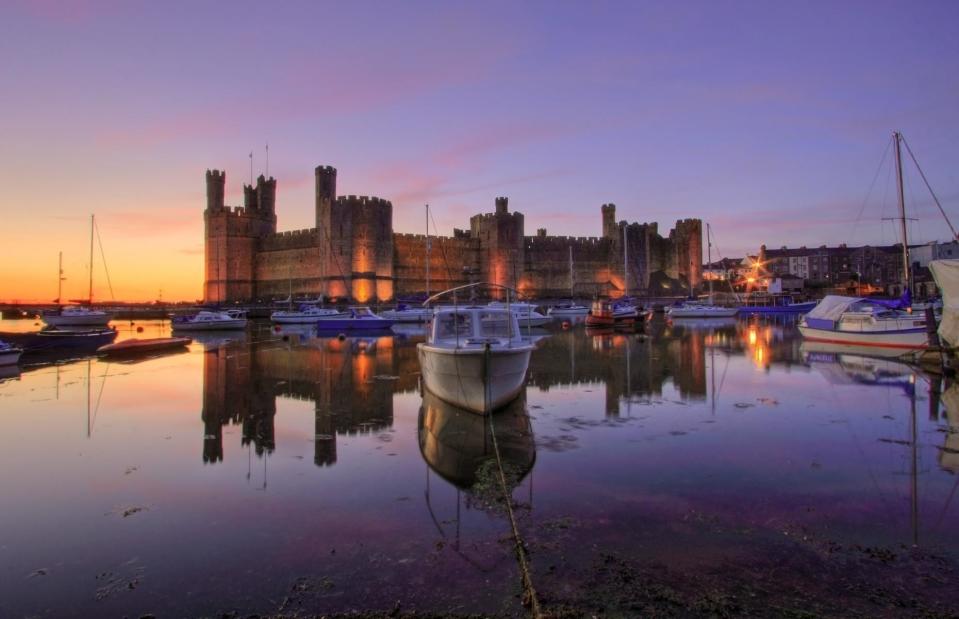
Gail Johnson/Shutterstock
Sitting on the banks of the River Seiont in Caernarfon, this magnificent Welsh castle is often regarded as one of the greatest buildings of the Middle Ages. The fortress-palace was built as part of King Edward I's defences to strengthen his power after conquering Wales. Caernarfon Castle is now a UNESCO World Heritage Site alongside the king’s other castles at Beaumaris, Conwy and Harlech.
Canterbury Cathedral, Canterbury, Kent, England
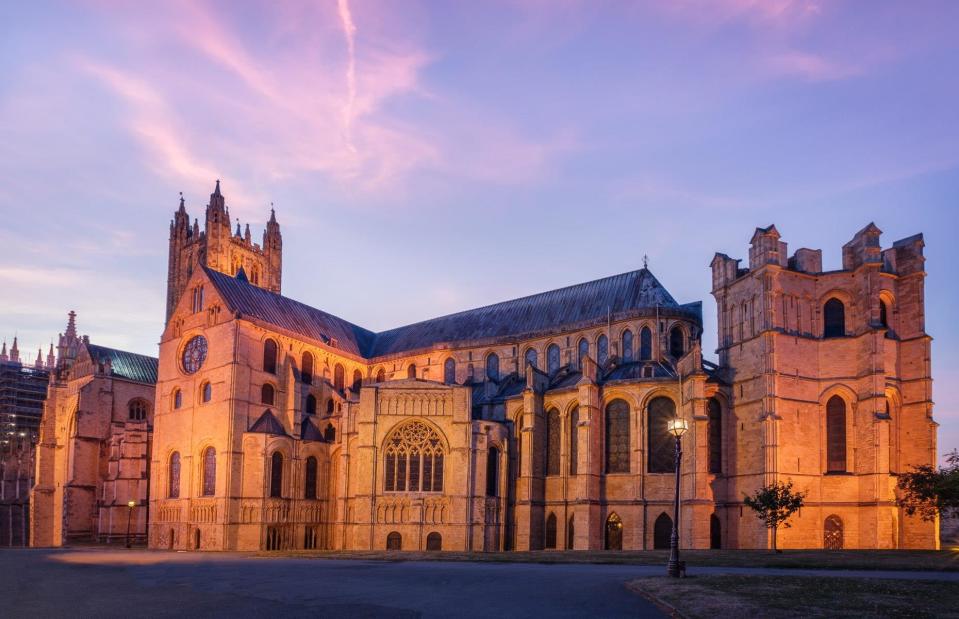
Orion Media Group/Shutterstock
Canterbury Cathedral was one of the most important centres of pilgrimage during medieval times. Built in AD 597 by the first archbishop of Canterbury St Augustine, who established Christianity in England, this awe-inspiring cathedral is the oldest church in the country still in use. Today, the striking building is one of the most stunning examples of Gothic and Romanesque architecture in the UK and is Canterbury’s best-known landmark.
St Michael’s Mount, Marazion, Cornwall, England
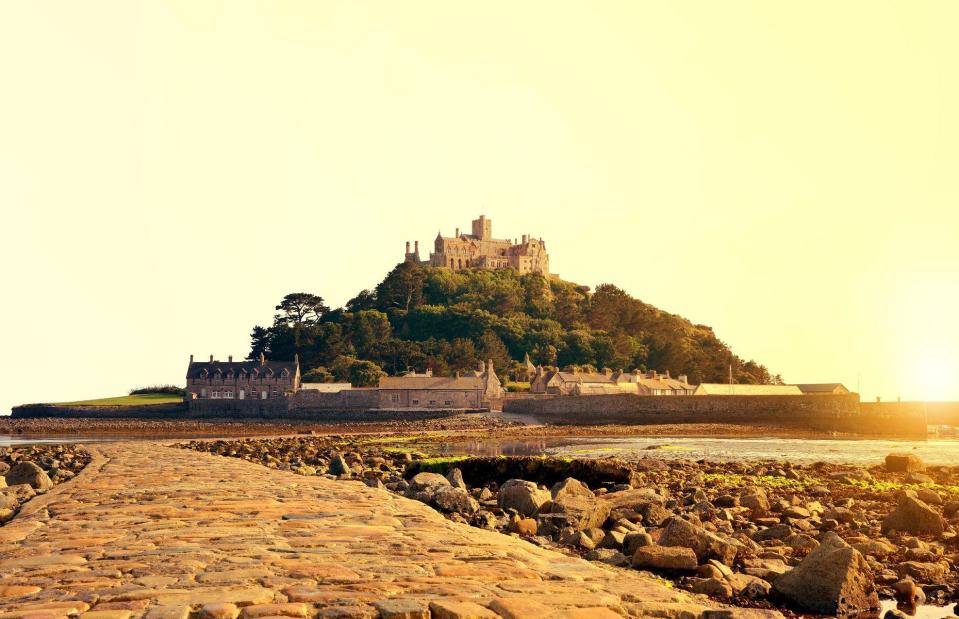
jaroslava V/Shutterstock
Lying off Cornwall’s west coast, this dramatic fortress and island has been home to the St Aubyn family since the 17th century. It can only be reached by boat or by walking, at low tide, across a granite causeway from nearby Mount’s Bay in the town of Marazion, close to Penzance. With its spectacular old castle, beautiful gardens and breathtaking ocean views, the rocky island is a much-photographed jewel of the Cornish coastline.
Bath, Somerset, England
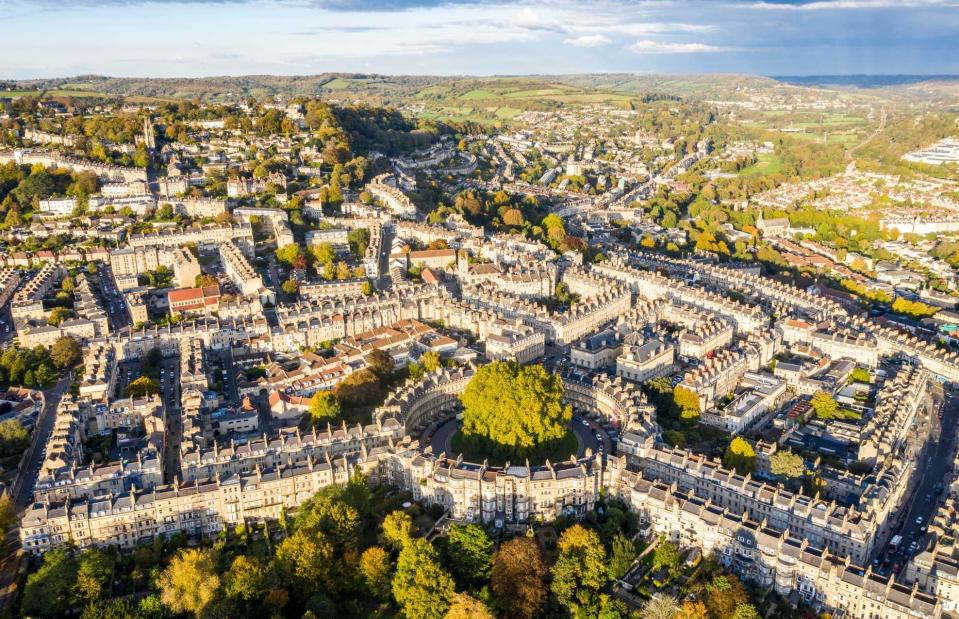
Octus_Photography/Shutterstock
Built for rest and relaxation, Bath has been a wellbeing destination for centuries. Founded by the Romans in the first century AD, the thermal spa settlement was known as Aquae Sulis and centred around the area’s natural hot springs. Visitors would flock here to experience the healing properties of the mineral-rich waters. Now dominated by honey-coloured Georgian buildings, the UNESCO-listed city typically draws millions of visitors each year. The Roman Baths, with their well-preserved architecture, are the main attraction.
Old Town, Edinburgh, Scotland

f11photo/Shutterstock
Edinburgh is one of the world’s most beautiful capitals – and one of the most historic. Dating back more than 1,000 years, the Scottish city’s Old Town was built on a glacial ridge during medieval times. The area is dotted with churches, houses and shops with a labyrinth of narrow streets weaving through it. The hilltop Edinburgh Castle looms above the city, while other prominent sites include St Giles Cathedral and the National Museum of Scotland.
Carrickfergus Castle, Carrickfergus, County Antrim, Northern Ireland
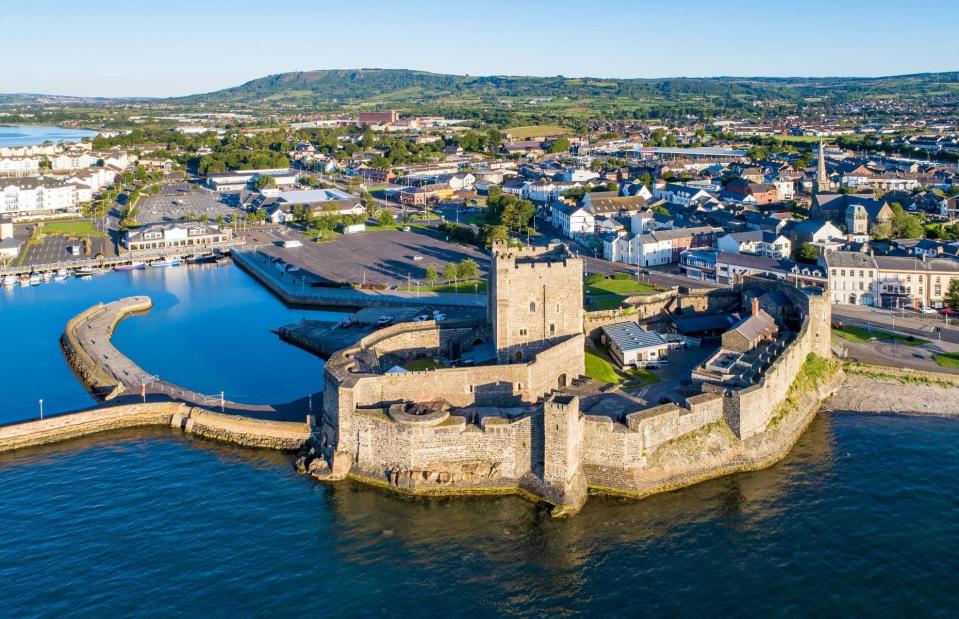
Nahlik/Shutterstock
Nestled on a rocky outcrop on the northern shore of Belfast Lough, Carrickfergus Castle has been an imposing monument for hundreds of years. Built in the 12th century, the stronghold has seen numerous occupations by the Scots, Irish, English and French. It now houses historical displays but it's arguably more impressive from the outside – the castle is one of the best-preserved medieval structures in Northern Ireland.
St Paul’s Cathedral, London, England

Alberto Stocco/Shutterstock
For more than 1,400 years a cathedral dedicated to St Paul has proudly stood at the highest point in the City of London. The present domed structure was designed by Sir Christopher Wren to replace the old Gothic cathedral destroyed in the 1666 Great Fire of London. One of London’s most famous buildings, St Paul’s Cathedral has also been the site for many major events, including the funeral of Lord Nelson and the wedding of Prince Charles and Princess Diana.
York Minster, York, England
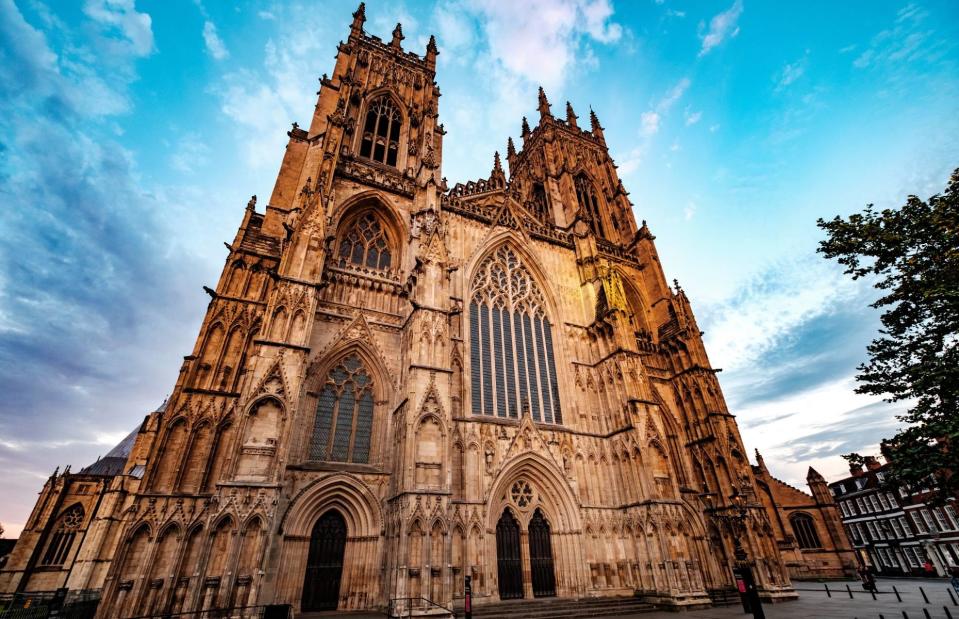
Jez Campbell/Shutterstock
Towering high above York, this magnificent Gothic building is one of the biggest medieval cathedrals in Europe. A masterpiece of stained glass and stone, its recently restored Great East Window dates back to 1405 and is the country’s largest example of medieval stained glass. York Minster’s stunning tower offers visitors incredible views across the historic city.
Cardiff Castle, Cardiff, Wales
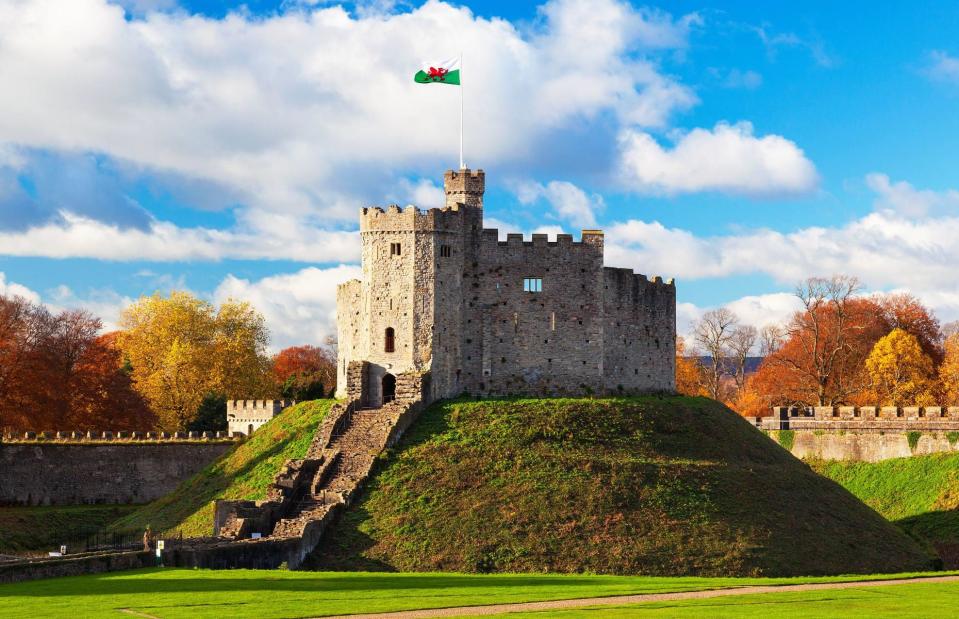
Billy Stock/Shutterstock
In the heart of Cardiff's city centre is a majestic castle brimming with 2,000 years of history. First the site of a Roman fort, parts were rebuilt following the Norman conquest and after passing through the hands of numerous noble families, including the 3rd Marquess of Bute, it was transformed into the Neo-Gothic structure visitors see today. It now belongs to the city and is one of Wales' top attractions.
Tower Of London, London, England
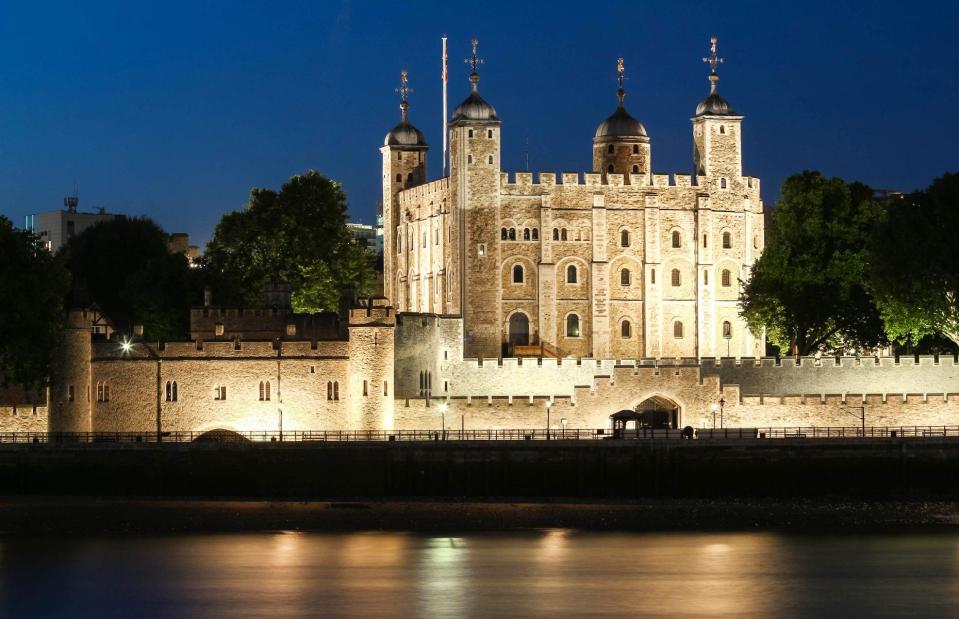
Petr Kovalenkov/Shutterstock
The Tower of London is shrouded in mystery and echoes with tales of torture and death. It was here that two princes mysteriously disappeared during the reign of Richard III, and where Anne Boleyn was imprisoned by Henry VIII before her execution. Although its days as a fortress and royal palace are long gone, visitors can step back in time by exploring its attractions including the Crown Jewels and the Royal Armouries, which is the oldest museum in Britain.
Fountains Abbey, Ripon, North Yorkshire, England

Reimar/Shutterstock
Tucked in a secluded valley in the Yorkshire Dales, Studley Royal Park is home to some of the most impressive religious ruins in England. Founded in the 12th century by Benedictine monks, Fountains Abbey is the World Heritage Site’s biggest draw. The abbey ruins are the largest of their kind in the country and, surrounded by Studley Royal’s beautiful gardens and water features, are a breathtaking sight.
Scott Monument, Edinburgh, Scotland

Fly Of Swallow Studio/Shutterstock
Erected in honour of the Scottish author Sir Walter Scott, this Victorian Gothic monument is one of Edinburgh’s most impressive landmarks. Standing tall in Princes Street Gardens, Scott Monument has narrow steps leading visitors to several viewing platforms, which provide sweeping panoramas across the city. A marble statue of the writer and his dog Maida proudly sits at the base.
Windsor Castle, Windsor, Berkshire, England
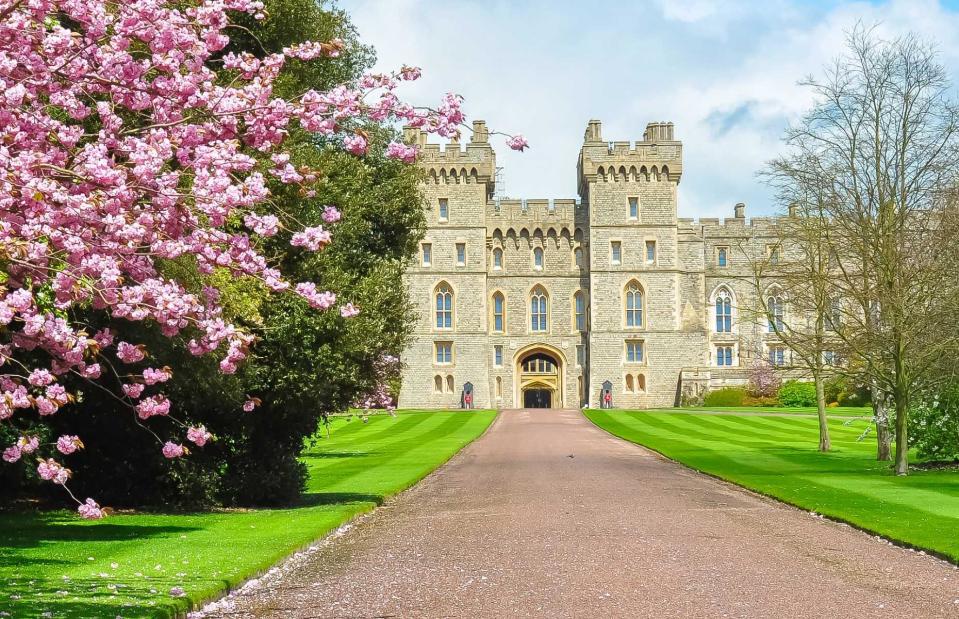
Mistervlad/Shutterstock
Known as the Queen’s favourite weekend escape, Windsor Castle is the oldest and largest occupied castle in the world. Sitting high above the River Thames and on the edge of a Saxon hunting ground, the fortress was originally built in the 11th century by William the Conqueror to guard the western approach to London. Today it’s still a working palace and location for royal weddings including Prince Harry and Meghan Markle's in 2018.
Pontcysyllte Aqueduct, Trevor, Wrexham, Wales
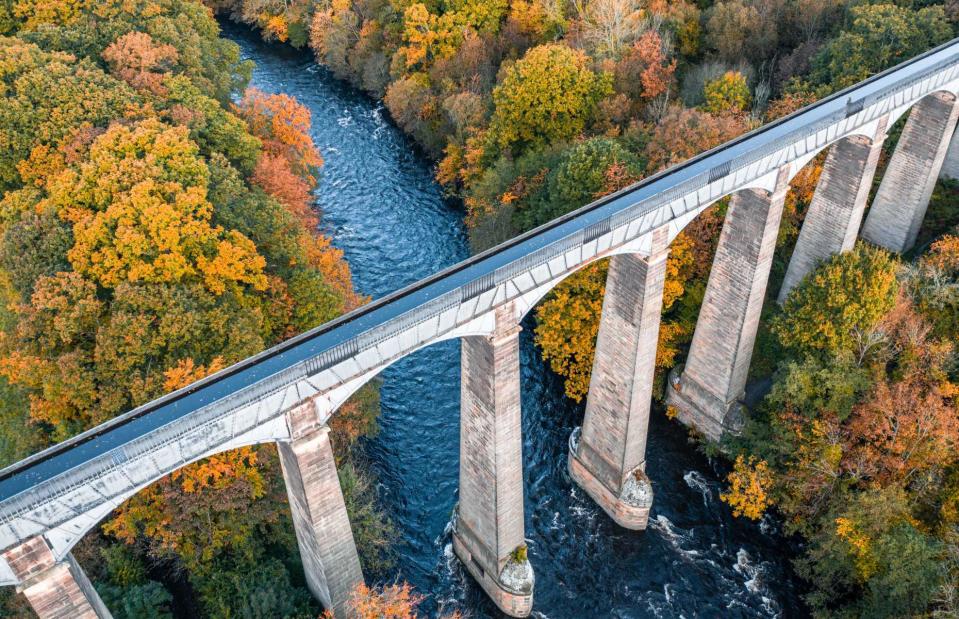
EddieCloud/Shutterstock
Soaring high above the Vale of Llangollen, the Pontcysyllte Aqueduct, meaning 'the bridge that connects', trails across the River Dee in northeast Wales. The bridge was designed by Thomas Telford and William Jessop in 1805. Nicknamed 'the stream in the sky', the historic bridge and 11 miles (17.7km) of canal are now a UNESCO-listed site and are considered a triumph of civil engineering.
Londonderry, County Derry, Northern Ireland
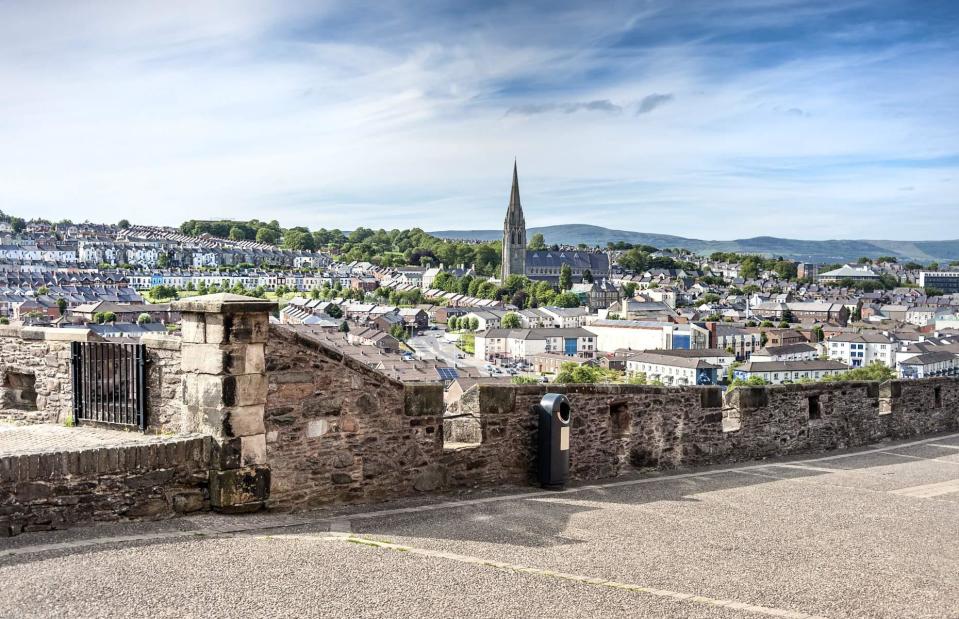
Rolf G Wackenberg/Shutterstock
The only completely walled city on the island of Ireland, Londonderry has history at every turn. Its famous defensive walls were built between 1613-18 to protect settlers from England and Scotland. Around a mile (1.6km) in circumference, the 400-year-old walls and their original gates have become one of the city’s main attractions. Londonderry is one of the finest examples of a walled city in Europe.
Palace of Westminster, London, England
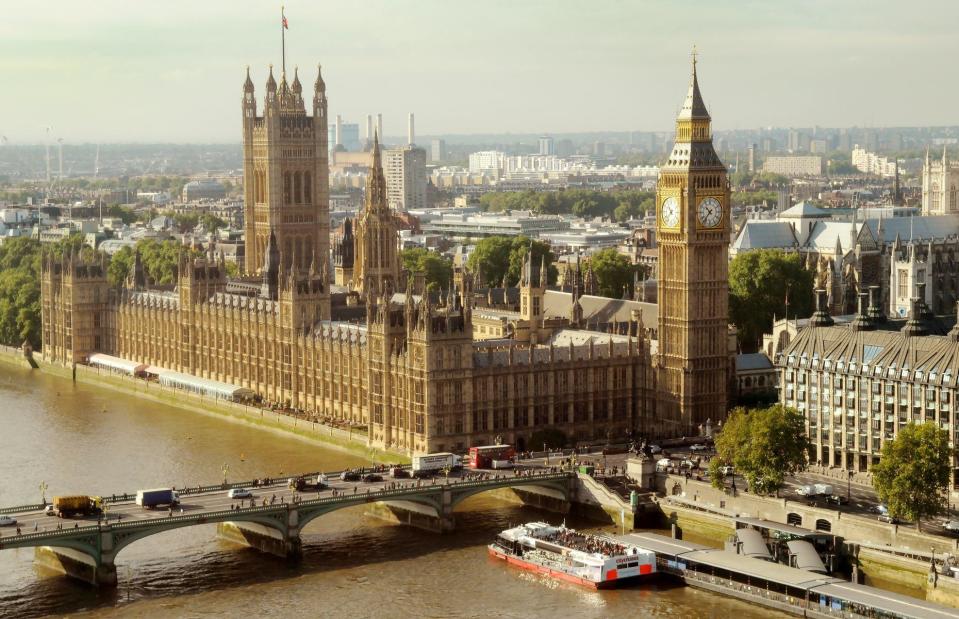
Bumble Dee/Shutterstock
On the banks of the River Thames, the Palace of Westminster’s location has been a place for kingship, politics and power since at least the Middle Ages. Originally built in 1016 as a palace by the Danish king Canute the Great, it has been the site for numerous notable events including the trial of Sir Thomas Moore and the infamous Gunpowder Plot. The present building was designed by Sir Charles Barry in the 19th century after the previous structure was destroyed in the 1834 fire, and its striking Victorian Gothic façade has become one of the most recognisable in the world.
Tintern Abbey, Tintern, Monmouthshire, Wales
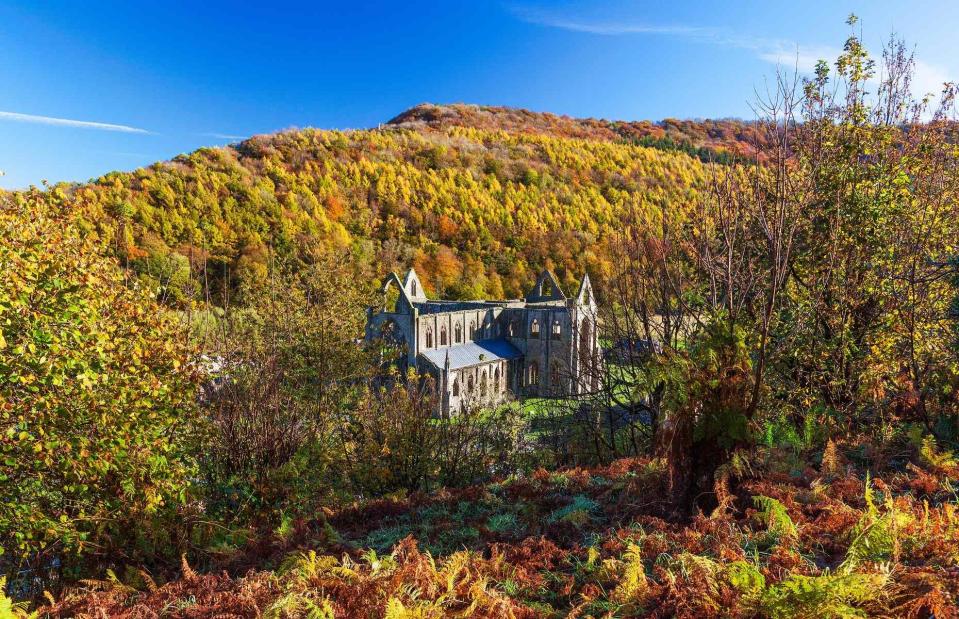
Billy Stock/Shutterstock
A much-loved Welsh landmark, this Gothic abbey has stood on the banks of the River Wye for hundreds of years. The present Tintern Abbey was built in 1269 and is considered a masterpiece of Gothic architecture. Romantic poet William Wordsworth wrote Lines Composed a Few Miles above Tintern Abbey about the beauty of the ruins and landscape. Today, the now-roofless abbey is one of the greatest monastic ruins in Wales.
Durham Cathedral, Durham, County Durham, England
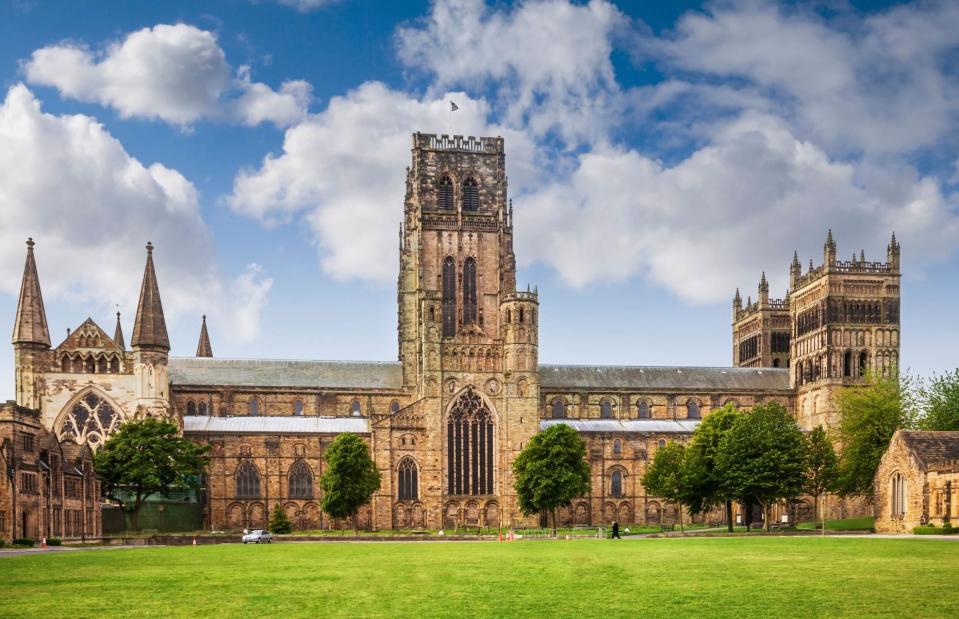
travellinglight/Alamy Stock Photo
Occupying a rocky outcrop overlooking the River Wear, this striking Romanesque cathedral dominates Durham’s skyline. The Norman-style building was built in the 11th century to house the shrine of St Cuthbert. Hailed as an architectural masterpiece, Durham Cathedral is famous for its large stone-vaulted ceiling, supported by huge carved pillars, and is the only cathedral in England to have retained nearly all of its Norman features.
Royal Pavilion, Brighton, East Sussex, England
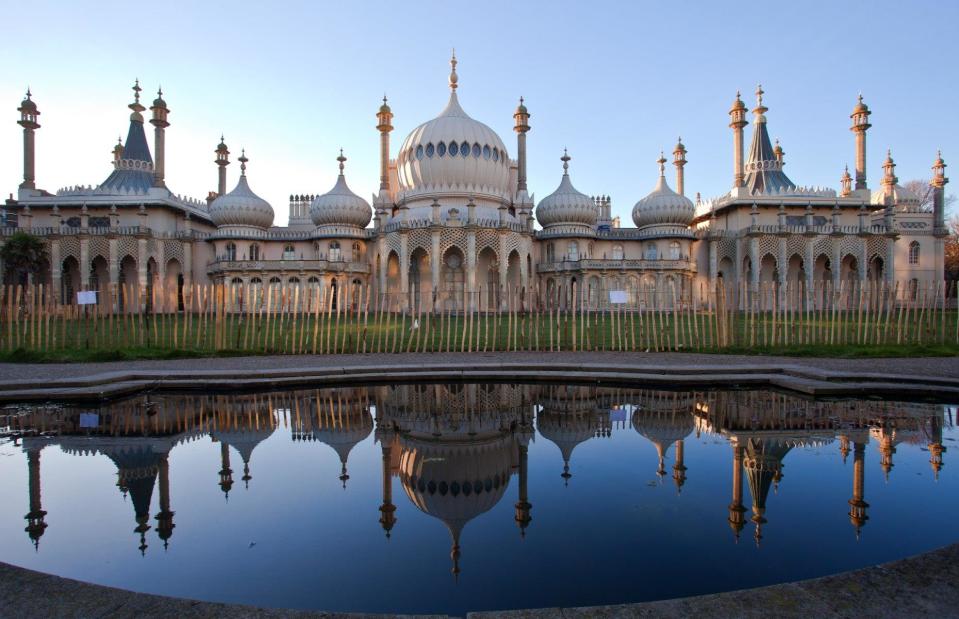
Patrick Wang/Shutterstock
One of Brighton’s most recognisable sights, the distinct domes and minarets of the Royal Pavilion give the palace its unique charm. The royal residence was built in the late 18th century in an Indo-Saracenic architectural style, with influences from India and China, as a seaside retreat for George IV. Today, the building is open to the public and is home to one of the few fully restored Regency gardens in the country.
Warwick Castle, Warwick, Warwickshire, England
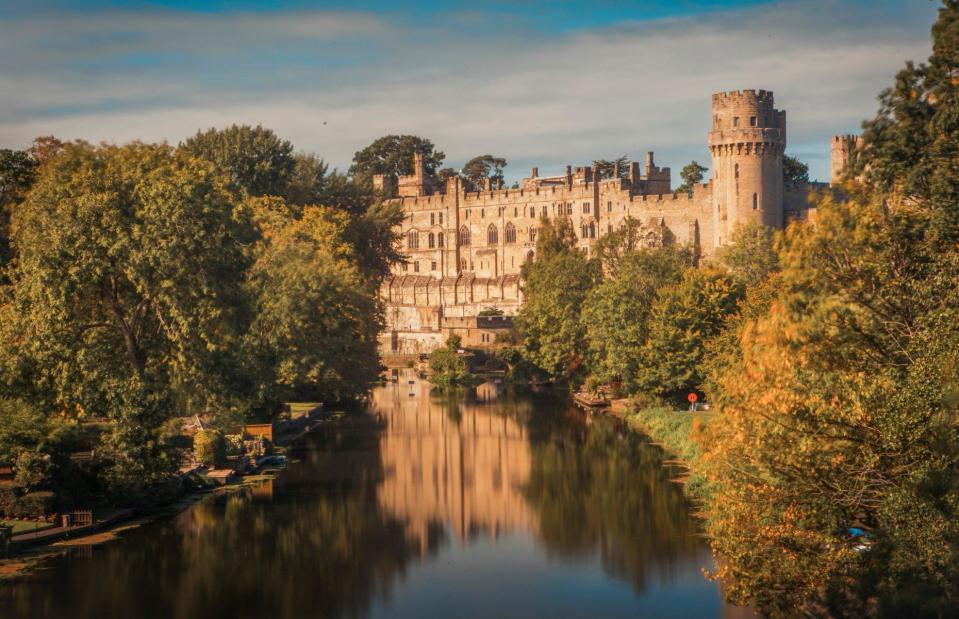
J M Ritchie/Shutterstock
Around 1,000 years of history lie within this incredible fortress in Warwickshire. Originally a Saxon fortification built to defend against a Danish invasion and later a motte and bailey castle – built on a mound and overlooking a courtyard – for William the Conqueror in 1068, Warwick Castle remains one of the most complete medieval fortresses in England. Beautifully mirrored in the waters below and surrounded by 64 acres of gardens and grounds, it’s a dramatic sight.


